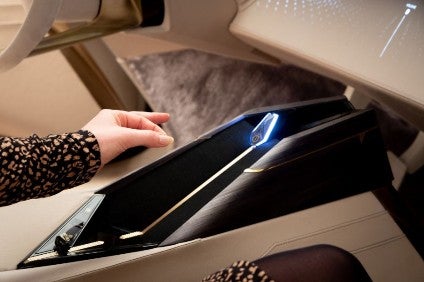
PSA’s DS Automobiles is working with Ultraleap to bring mid-air haptic and hand tracking technology to future models in a move that could spell the end for touchscreens and buttons.
In a claimed industry first in the DS Aero Sport Lounge concept, the automaker has developed a contact free user experience interface with gesture control powered by hand tracking and mid-air haptic feedback technology.
DS research has found that the use of gesture control and haptics in an automotive setting results in three times greater accuracy when compared with a touchscreen.
Drivers and passengers can control infotainment and navigation by making simple hand gestures in mid air.
The skeletal tracking technology generates a virtual model of the hand’s movements, modelling finger, palm, bones and joints, which enables the system to predict the position of a finger even if obscured from view.
Once the gesture command has been registered, the system provides the haptic feedback response to confirm that commands have been recognised and understood.
How well do you really know your competitors?
Access the most comprehensive Company Profiles on the market, powered by GlobalData. Save hours of research. Gain competitive edge.

Thank you!
Your download email will arrive shortly
Not ready to buy yet? Download a free sample
We are confident about the unique quality of our Company Profiles. However, we want you to make the most beneficial decision for your business, so we offer a free sample that you can download by submitting the below form
By GlobalDataUsing an array of ultrasonic speakers soundwaves are choreographed to create a single, localised point of high pressure in front of the screen or surface. The slight vibrations resulting from the waves can be detected by skin receptors, simulating the sensation of touch.
These waves can be manipulated to create a series of different impulses, enabling the user to perceive different responses, such as a simple click, a dial or a ripple.
A range of systems in the car are controlled in this way. The response is augmented using artificial intelligence resulting in accurate gesture control with enhanced tactile feedback in mid-air.
This type of system has been proven to offer three times greater accuracy when compared with traditional touchscreens reducing eyes off the road time and mental load. In trials, 25% of participants using gesture control and haptics made no offroad glances at all, offering improved driver control and safety.







